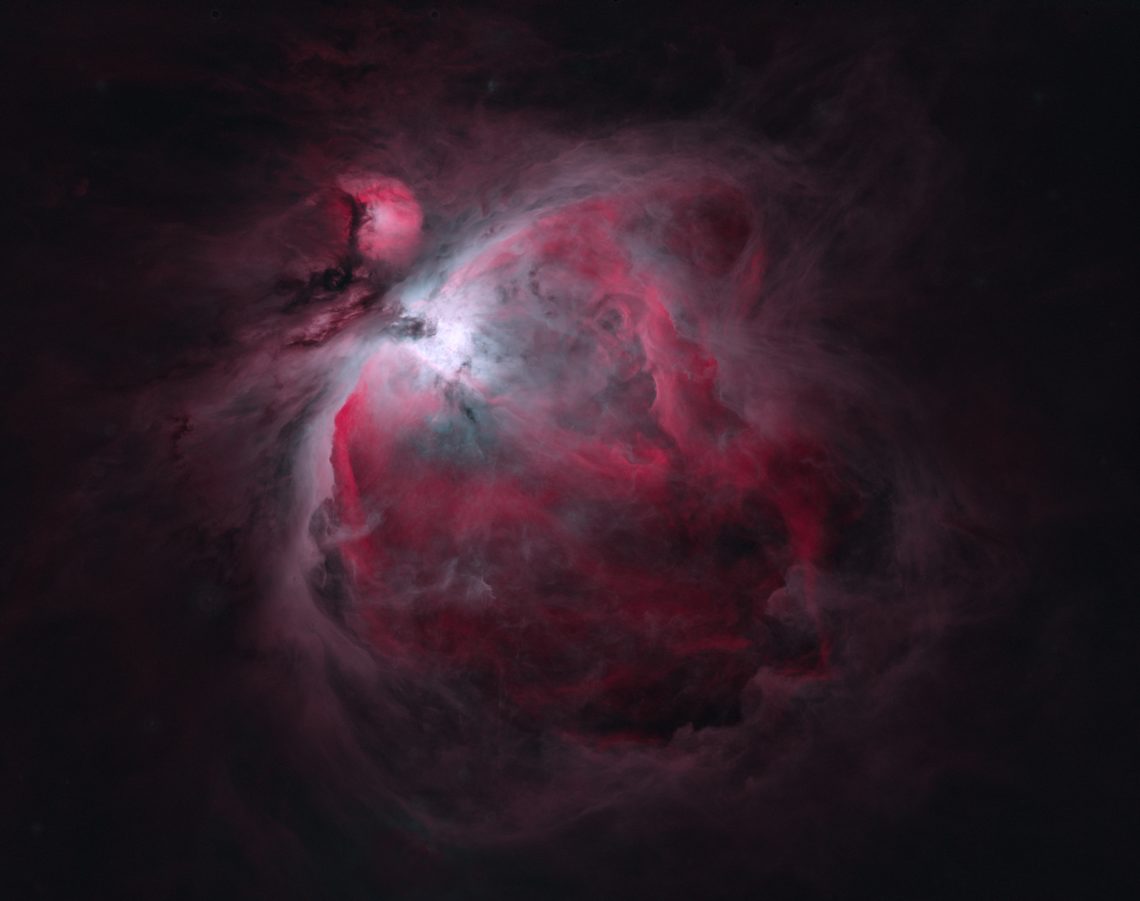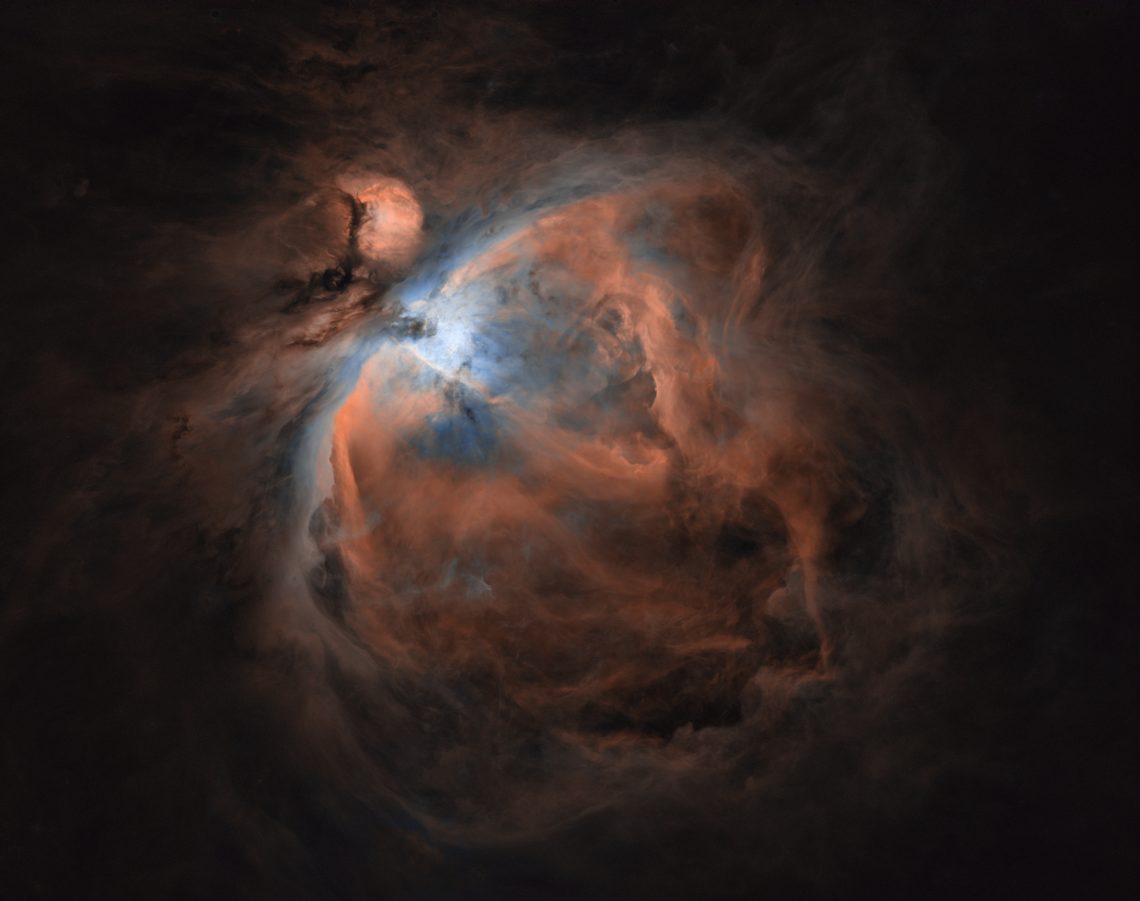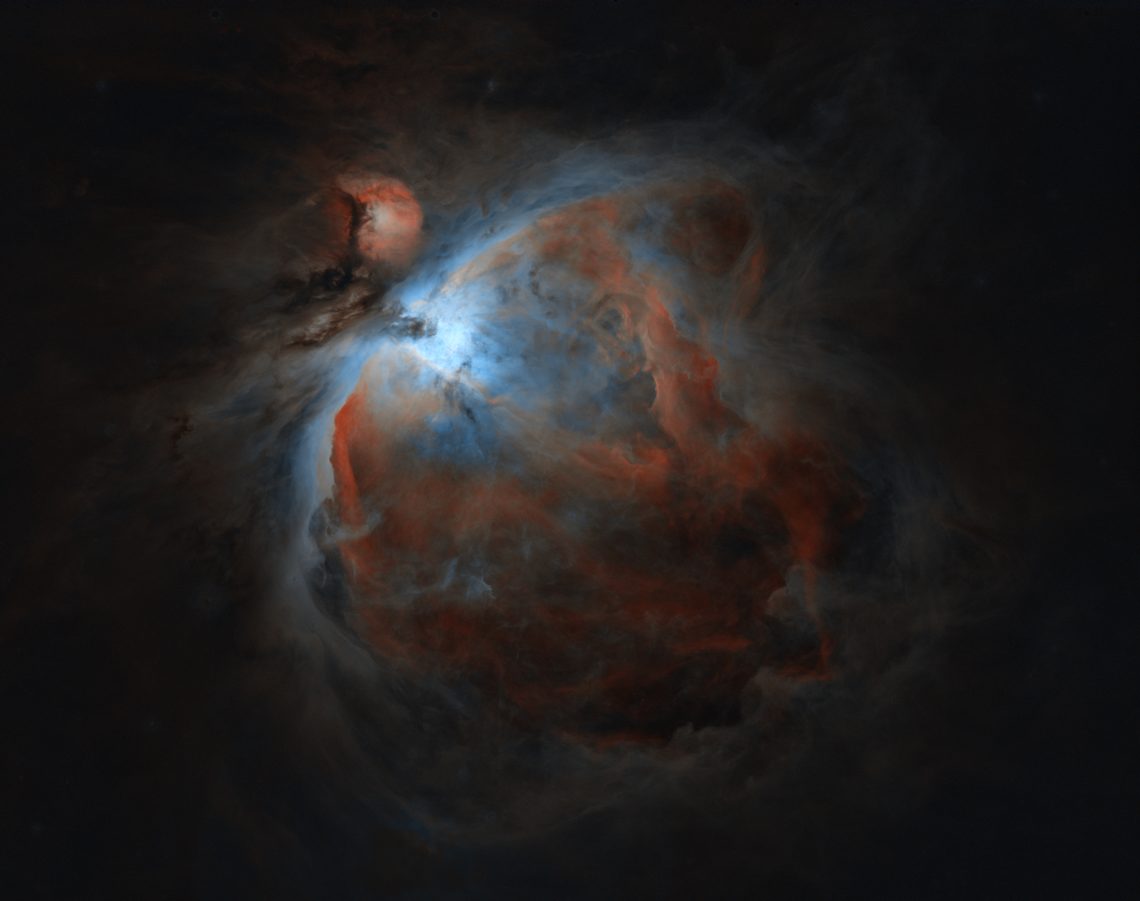One of the absolute highlights of the winter season, the Great Orion Nebula, M42, located in the constellation Orion. You can see it by naked eye in sword of Orion from a reasonably dark location. Because of its brightness and size, it is a very popular target for entry-level astrophotography. However, it is also extensively studied by professional astronomers, being the closest star-forming region only 1300 light years away from us.

The false-color image above is composed of Ha, OIII, and SII narrowband images with more than 7 hours total exposure time. To capture the large dynamics range of the object, individual exposures of 30 sec, 120sec, and 300sec are combined using a high-dynamic-range technique. For added effect, the stars were removed using the Starnet++ artificial neural network.
The animation below shows the individual narrowband channels as monochrome images and then three false-color composites that use different mappings of the three narrowband channels to RGB colors.
| Telescope | CFF Triplet APO 160mm, Riccardi Reducer, f=810mm |
| Camera | ASI1600MM Pro, 8-Slot Filter Wheel with Baader Filters |
| Exposures | HOS, 18,18,18 x 300sec + 120sec + 30sec, 7.3 hours total |
| Data taken | 3 – 5 January 2020 |
| Site | TURMX @ E-EyE Observatory, Extremadura |
| Processing | Robert Roth, 5 January 2020 |





